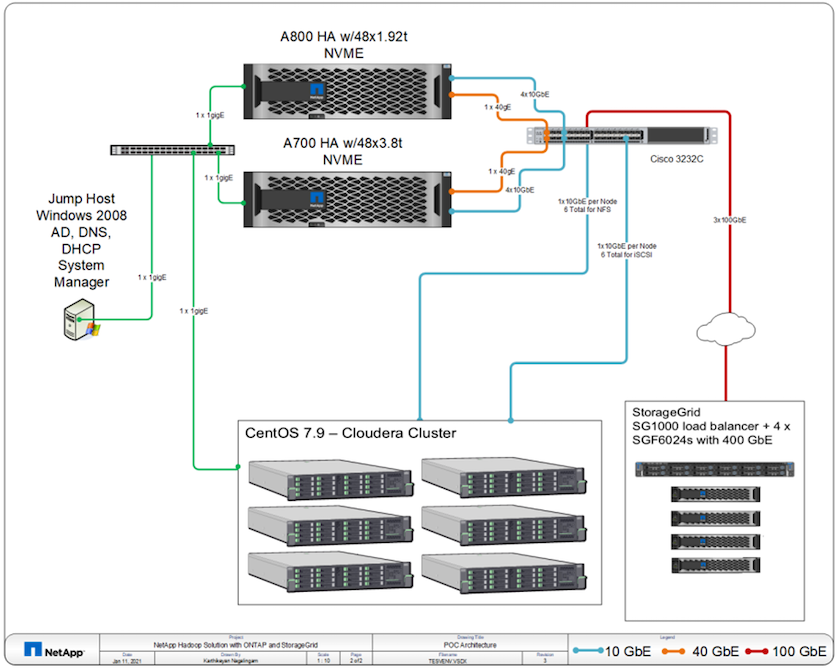Use case 5: Accelerate analytic workloads
 Suggest changes
Suggest changes


In this scenario, a large financial services and investment bank’s analytics platform was modernized using the NetApp NFS storage solution to achieve significant improvement in analyzing investment risks and derivatives for its asset management and quantitative business unit.
Scenario
In the customer’s existing environment, the Hadoop infrastructure used for the analytics platform leveraged internal storage from the Hadoop servers. Due to proprietary nature of JBOD environment, many internal customers within the organization were unable to take advantage of their Monte Carlo quantitative model, a simulation that relies on the recurring samples of real-time data. The suboptimal ability to understand the effects of uncertainty in market movements was serving unfavorably for the quantitative asset management business unit.
Requirements and challenges
The quantitative business unit at the bank wanted an efficient forecasting method to attain accurate and timely predictions. To do so, the team recognized the need to modernize the infrastructure, reduce existing I/O wait time and improve performance on the analytic applications such as Hadoop and Spark to efficiently simulate investment models, measure potential gains and analyze risks.
Solution
The customer had JBOD for their existing Spark solution. NetApp ONTAP, NetApp StorageGRID, and MinIO Gateway to NFS was then leveraged to reduce the I/O wait time for the bank’s quantitative finance group that runs simulation and analysis on investment models that assess potential gains and risks. This image shows the Spark solution with NetApp storage.

As shown in figure above, AFF A800, A700 systems, and StorageGRID were deployed to access parquet files through NFS and S3 protocols in a six-node Hadoop cluster with Spark, and YARN and Hive metadata services for data analytic operations.
A direct-attached storage (DAS) solution in the customer’s old environment had the disadvantage to scale compute and storage independently. With NetApp ONTAP solution for Spark, the bank’s financial analytics business unit was able to decouple storage from compute and seamlessly bring infrastructure resources more effectively as needed.
By using ONTAP with NFS, the compute server CPUs were almost fully utilized for Spark SQL jobs and the I/O wait time was reduced by nearly 70%, therefore providing better compute power and performance boost to Spark workloads. Subsequently, increasing CPU utilization also enabled the customer to leverage GPUs, such as GPUDirect, for further platform modernization. Additionally, StorageGRID provides a low-cost storage option for Spark workloads and MinIO Gateway provides secure access to NFS data through the S3 protocol. For data in the cloud, NetApp recommends Cloud Volumes ONTAP, Azure NetApp Files, and Google Cloud NetApp Volumes.



 Artificial Intelligence
Artificial Intelligence
